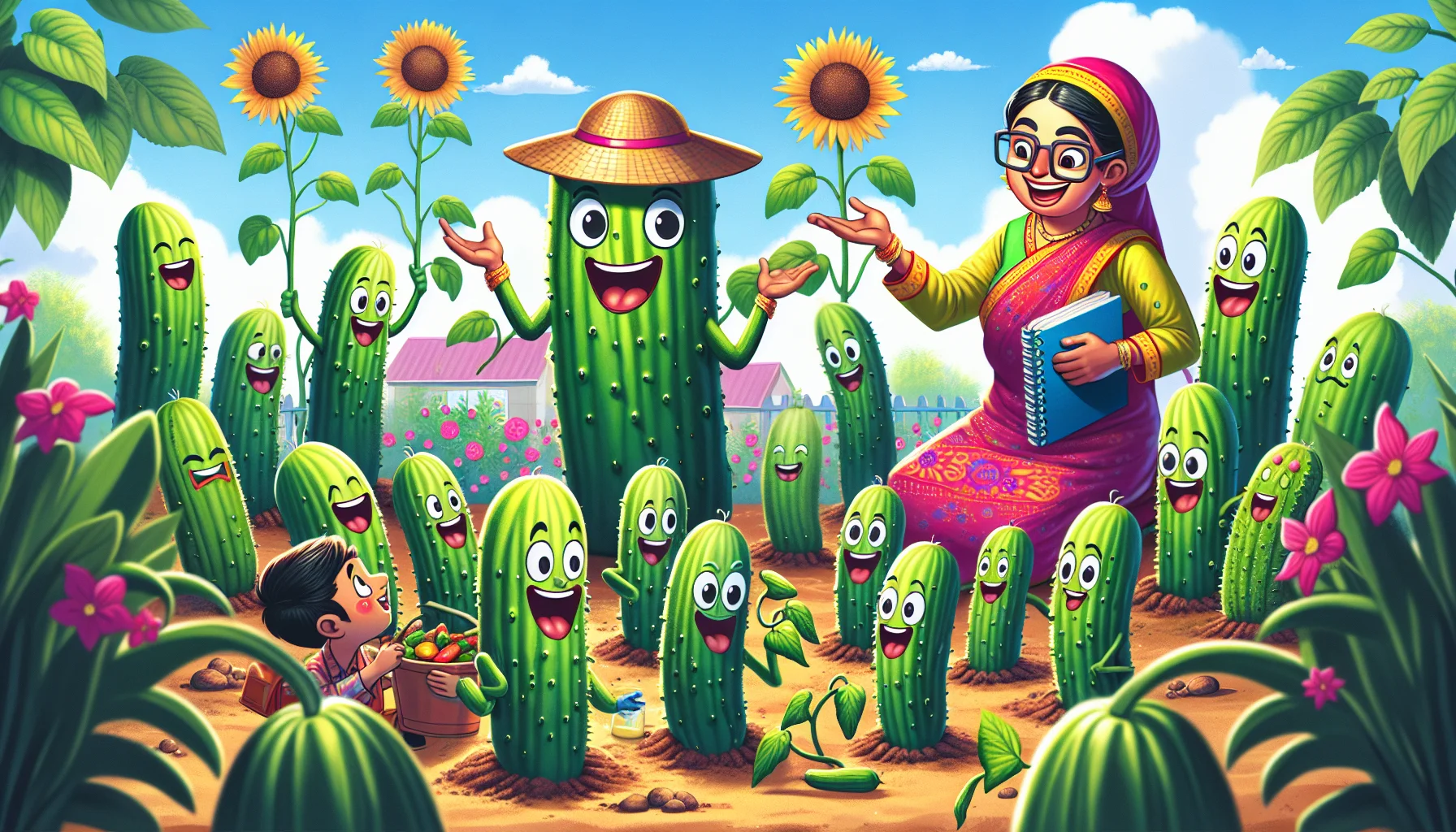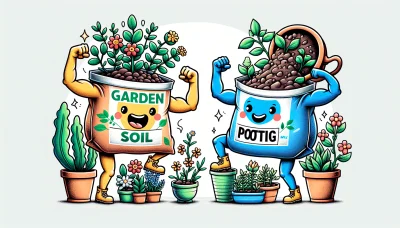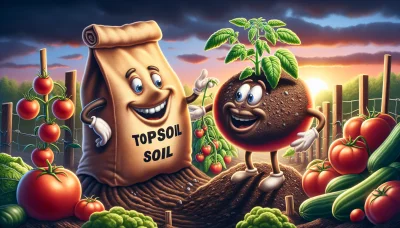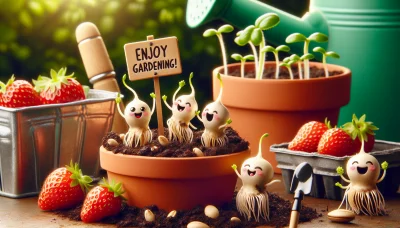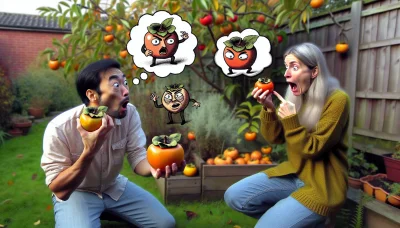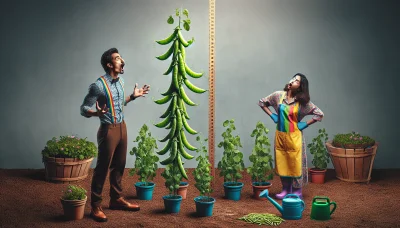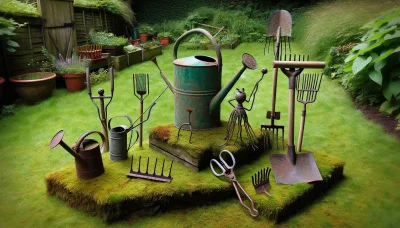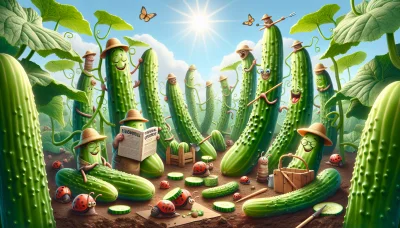How to grow pickling cucumbers Quiz
Test Your Knowledge
Question of
How to Grow Pickling Cucumbers: A Beginner's Guide
Pickling cucumbers have become a favorite among gardening enthusiasts for their crisp texture and versatility in the kitchen. These cucumbers are specifically cultivated for the pickling process, though they can also be enjoyed fresh. Growing them can be a rewarding venture, offering a bountiful harvest that can be transformed into delicious pickles to enjoy year-round. This guide aims to introduce beginners to the basics of cultivating these delightful vegetables, ensuring a successful gardening experience.
Choosing the Right Variety
Selecting the appropriate cucumber variety for pickling is crucial for achieving the best taste and texture in your pickles. Not all cucumbers are suitable for pickling, as some varieties are specifically bred for fresh consumption and may not hold up well in the pickling process. The right pickling cucumber should have a firm flesh and be small to medium in size, with a bumpy surface and thin skin that absorbs brines and spices effectively.
- Kirby Cucumbers
- Persian Cucumbers
- Gherkin Cucumbers
- Boston Pickling Cucumbers
- Parisian Gherkin Cucumbers
Planting Your Cucumbers
The best time to plant pickling cucumbers is after the last frost when the soil has warmed to at least 70°F. These cucumbers thrive in full sunlight and require well-draining soil rich in organic matter. Ensuring the soil temperature and conditions are right is crucial for successful germination and growth.
- Choose a sunny spot in your garden with well-draining soil.
- Amend the soil with compost or well-rotted manure to increase fertility.
- Wait until the soil temperature reaches at least 70°F before planting.
- Sow seeds directly into the ground, planting them 1 inch deep and 2 to 3 inches apart in rows.
- Water the planting area thoroughly after sowing the seeds.
- Once seedlings emerge, thin them to stand 6 to 8 inches apart.
- Keep the soil consistently moist but not waterlogged.
- Apply mulch around the plants to retain moisture and suppress weeds.
- Monitor for pests and diseases and take action as needed to protect your crop.
- Harvest pickling cucumbers when they are 2 to 6 inches long for the best flavor and texture.
Caring for Your Cucumber Plants
To ensure your cucumber plants thrive, it's essential to provide them with proper care. Regular watering is crucial, especially during dry spells, to keep the soil consistently moist but not waterlogged. Fertilizing your plants every four to six weeks with a balanced fertilizer can help promote vigorous growth and high yields. Cucumbers also require full sunlight for at least six to eight hours daily, so be sure to plant them in a sunny spot in your garden. Paying attention to these care requirements can lead to a bountiful harvest of crisp, delicious cucumbers.
Common Pests and Diseases to Watch Out For
- Cucumber Beetles
- Powdery Mildew
- Downy Mildew
- Spider Mites
- Aphids
Harvesting and Pickling
To ensure the best quality pickles, it's crucial to harvest cucumbers at the right time. For pickling purposes, cucumbers should be picked when they are still young and firm, before they start to turn yellow. The ideal size is around 4 to 6 inches in length, as this size tends to have the perfect balance of crunchiness and flavor. It's also important to pick them early in the morning when the temperatures are cooler to maintain their crispness. After harvesting, start the pickling process as soon as possible to preserve their freshness and crunch.
Simple Steps for Pickling Cucumbers at Home
- Wash the cucumbers thoroughly to remove any dirt or debris.
- Cut off the blossom end of the cucumber to prevent enzymes from softening the pickles.
- Sterilize your jars and lids by boiling them in water for 10 minutes.
- In a large pot, mix water, vinegar, and pickling salt to create your brine. Bring the mixture to a boil.
- Pack the cucumbers tightly into the jars, adding any spices or herbs you like such as dill, garlic, or mustard seeds.
- Pour the boiling brine over the cucumbers, leaving a half-inch of headspace at the top of the jar.
- Remove any air bubbles by gently tapping the jar or using a non-metallic tool.
- Wipe the jar rims clean, then apply the sterilized lids and rings. Tighten to fingertip tightness.
- Process the jars in a boiling water bath for the time recommended by your recipe, usually around 10-15 minutes.
- Remove the jars carefully and let them cool undisturbed for 24 hours. Check seals, then store in a cool, dark place for up to a year.
Troubleshooting Common Issues
When growing pickling cucumbers, gardeners might encounter a few common problems, but fortunately, there are effective solutions for each. One issue is powdery mildew, a fungal disease that appears as white spots on leaves. This can be mitigated by ensuring good air circulation around the plants and applying fungicides if necessary. Another common problem is cucumber beetles, which can damage leaves and spread diseases. These can be managed by using row covers early in the season and applying appropriate insecticides. Additionally, uneven watering can lead to bitter-tasting cucumbers. To avoid this, maintain a consistent watering schedule, providing 1 to 2 inches of water per week. Lastly, nutrient deficiencies can hinder growth, so it's important to test the soil and amend it with the appropriate fertilizers. Addressing these issues promptly will help ensure a bountiful harvest of pickling cucumbers.
Conclusion: Enjoy Your Pickling Cucumbers
Growing your own cucumbers for pickling is not only a rewarding experience but also a delightful journey into the world of home gardening and culinary arts. The joy of watching your cucumbers flourish from tiny seeds to crisp, delicious fruits ready for the jar is unparalleled. By cultivating your own pickling cucumbers, you have the freedom to experiment with a variety of recipes, from traditional dills to sweet bread-and-butters, or even spicy concoctions that challenge the palate. Each harvest offers a new opportunity to enjoy the fruits of your labor, share your bounty with friends and family, and perhaps even discover your new favorite pickle. So, dive into the world of pickling cucumbers and let your garden and kitchen adventures begin!
